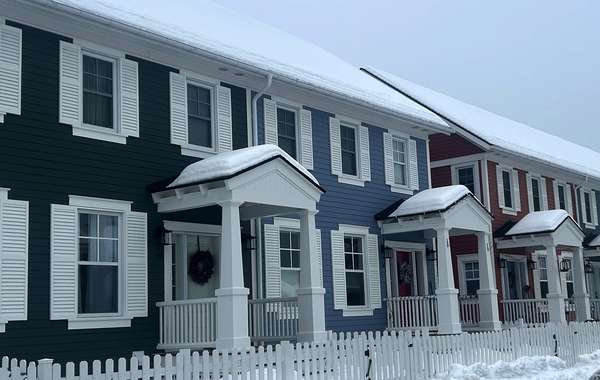In Canada, the pursuit of homeownership faces formidable challenges, including escalating construction expenses and intricate approval procedures. Responding to these hurdles, the federal government has proposed a groundbreaking solution: the establishment of a standardized home directory.
This innovative initiative, reminiscent of similar endeavors in promoting prefab homes in British Columbia, stands poised to reshape the Canadian housing sector, notably impacting sustainability and affordability with pre-approved homes in a catalogue format, ideal for prefabricated manufacturing.
A streamlined construction process
The core concept of a standardized home directory revolves around a centralized repository of pre-approved home designs meticulously scrutinized for safety, efficiency, and compliance with building codes. Builders have the ability to select models from this catalog, expediting the approval process and allowing them to concentrate on construction. These homes can also be prefabricated in a factory using fewer materials and ensuring more consistent quality control. The potential benefits are many:
1. Accelerated construction timelines: By removing the necessity for individual design approvals, standardized models could trim months off the construction schedule. This expedites housing availability, potentially alleviating the existing supply deficit and enhancing homeownership accessibility.
2. Economies of scale and cost reductions: Standardized designs facilitate economies of scale in material procurement and the utilization of prefabrication methodologies. These efficiencies translate into substantial cost savings, rendering homes more financially viable for prospective buyers.
3. Enhanced energy-efficiency: The new Canadian prefab directory can prioritize sustainable design elements like high-performance insulation, triple glazed windows, high-performance doors, water-conserving fixtures, and compatibility with solar panels. This sustainability emphasis not only benefits the environment but also curtails long-term energy expenses for homeowners.

Addressing challenges in a standardized homes approach
Despite its potential, this standardized homes catalogue initiative also confronts certain challenges:
1. Design flexibility: Standardized models may evoke concerns regarding architectural diversity and customization options. Ensuring the directory encompasses a spectrum of styles and layouts is imperative to cater to varied preferences and requirements.
2. Local adaptation: Canada's diverse climate and geography necessitate adaptable designs. The directory must incorporate models suited to diverse regional landscapes, guaranteeing energy efficiency and resilience across different environments.
3. Upholding quality standards: Maintaining stringent quality standards throughout the design, construction, and material selection phases is paramount. Regular inspections and compliance with building codes are indispensable to uphold the safety and durability of standardized homes.
4. Is basic Code compliance good enough? Not really! We at Ecohome have already proved that high performance sustainable prefab homes can be built at a comparable cost to standard code built homes - and this applies equally to this idea of a standardized homes catalogue. If we're going to design homes for production in large quantities and probably on a prefab or panelized basis, then we should be designing them to be high efficiency and low carbon, as well as targeting healthy indoor air quality.
Conclusion: are standardized homes a good or bad idea?
The standardized home directory concept presents a compelling opportunity to confront Canada's housing challenges. By prioritizing sustainability, affordability, and adaptability, this initiative could change the homebuilding landscape, actualizing the dream of homeownership for a broader reach of Canadians while fostering a more sustainable national future.
Final Thoughts: It's essential to recognize that this perspective represents one facet of a multifaceted issue. As with any substantial policy shift, various considerations and potential drawbacks necessitate evaluation. Yet, through fostering open dialogue and collaboration among policymakers, builders, designers, and the public, we can ensure that this initiative, if implemented, serves the collective interests of Canadians and contributes to a more sustainable and equitable housing market.
Now you know about the standardized homes catalogue initiative for prefabs in Canada. Find more pages about energy efficient home renovations and improvements on the pages below and in the Ecohome Green Building Guide pages.
Find out here and reap the benefits of a free Ecohome Network Membership here. |







































You can also search in the most complete directory of high performance prefab homes in Canada on Ecohome.